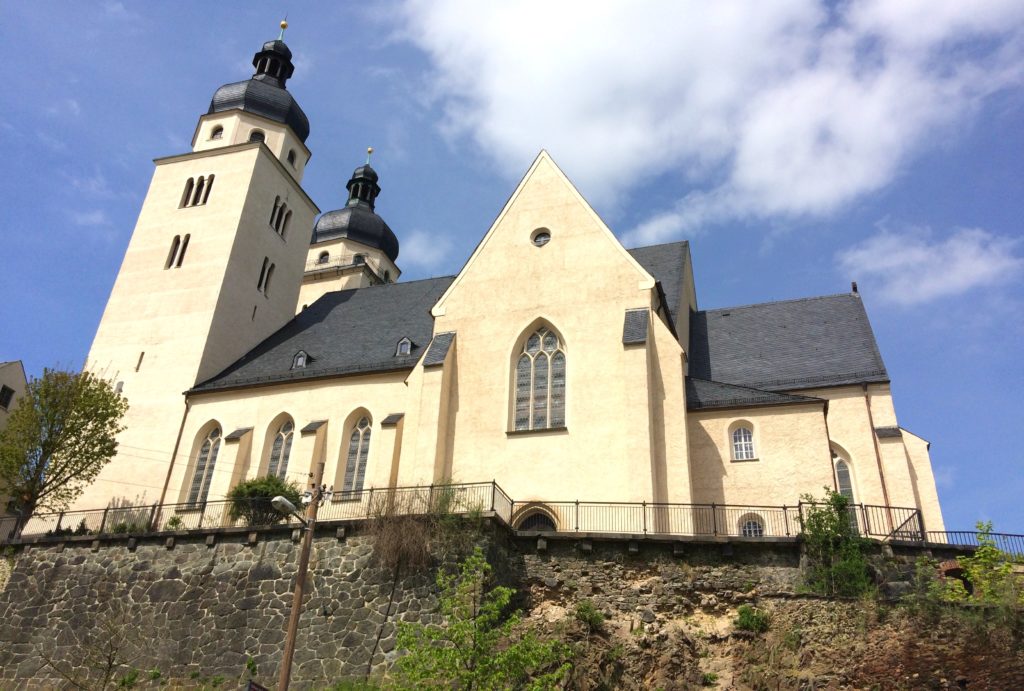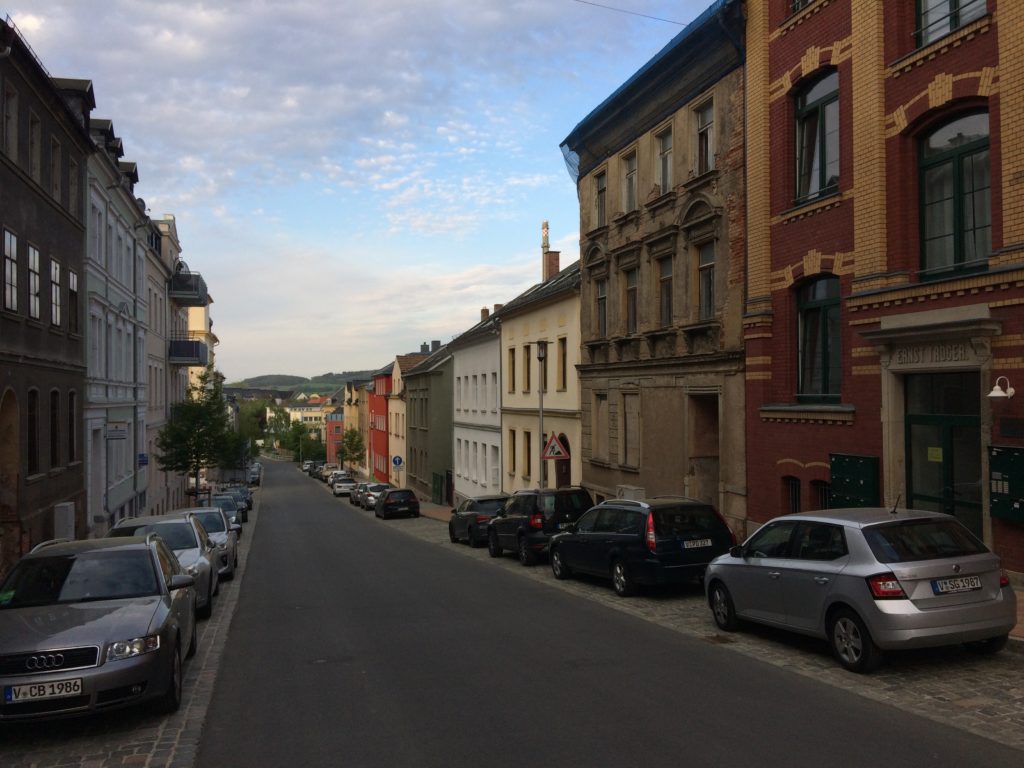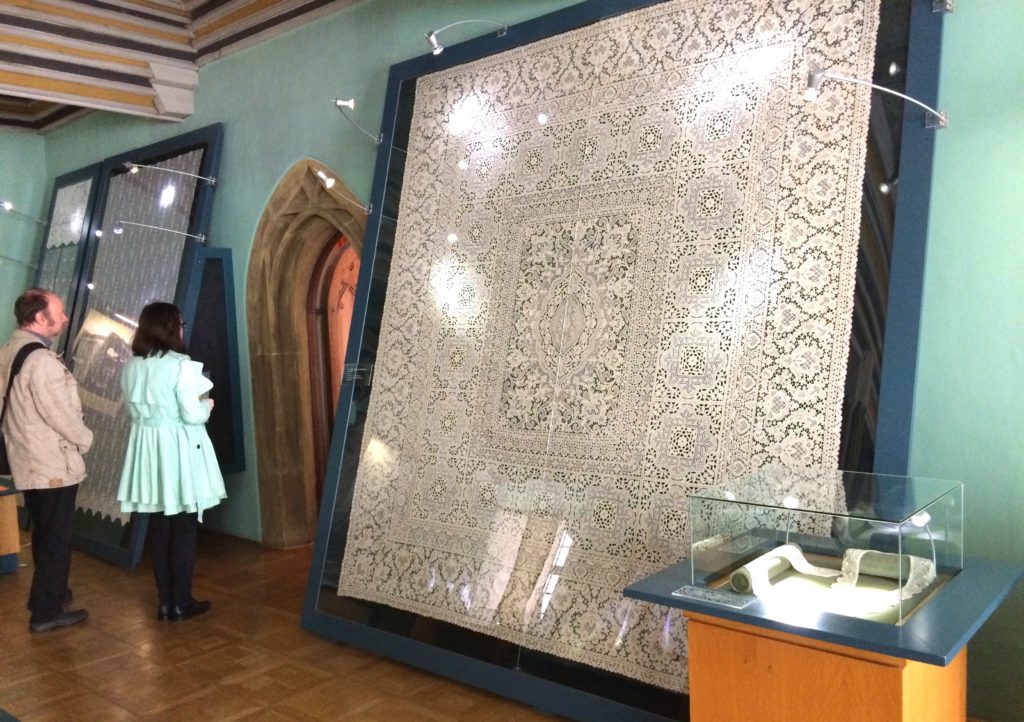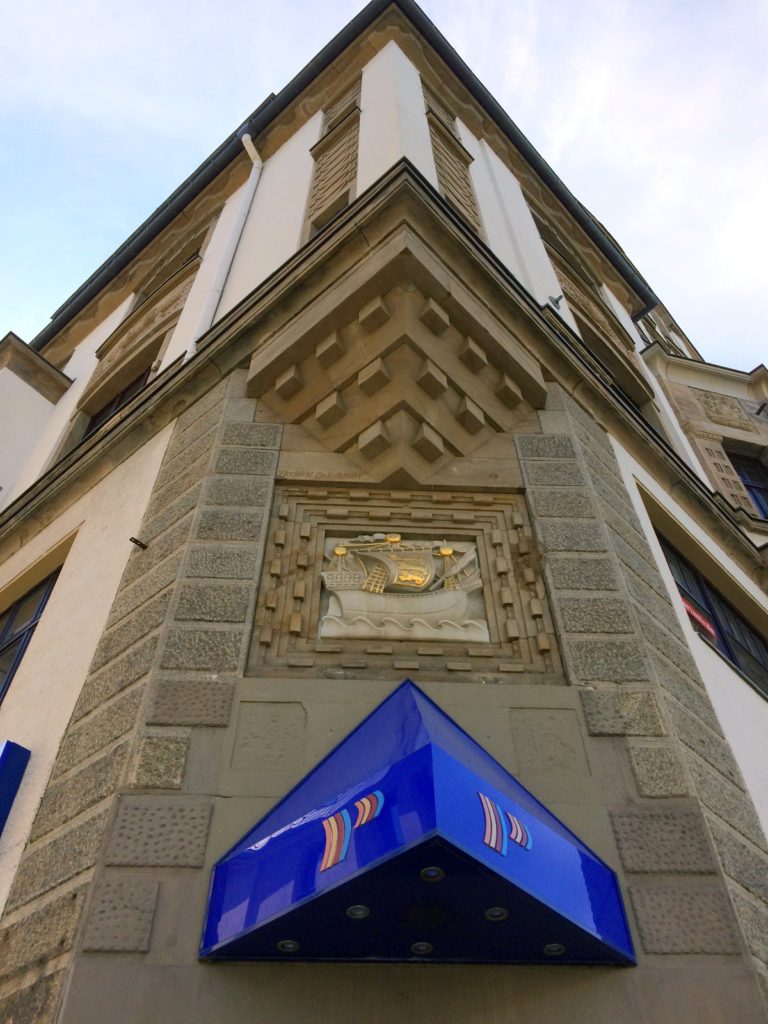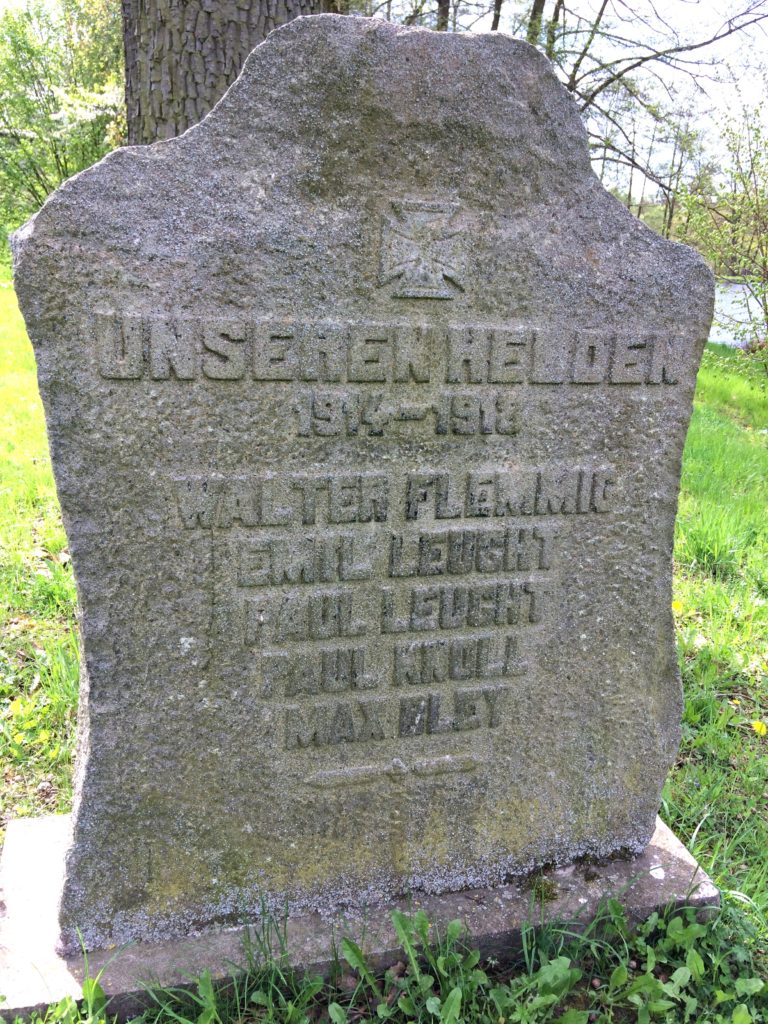The Amazing Food
Last spring after I spoke at a software developer conference in Berlin Germany, I had the opportunity to take several personal days while there. I also ate some pretty amazing food, but I never got the chance to write a blog post about it. So here is that blog post.
Better late than never!
Hotel Buffet
I stayed at the Leonardo Royal Hotel Berlin Alexanderplatz, which was just a few blocks away from the Alexanderplatz plaza, and a short tram ride or bus ride from anywhere in the city. The breakfast buffet was pretty typical. I enjoyed it.
Since I was speaking at a conference, I tried not to overdo it at the breakfast buffet. That’s why there’s so much white space on my plate.

Street Food
I had to try some German street food while I was there! In the Alexanderplatz plaza, there are plenty of vendors to choose from. I tried the Currywurst which is pork sausage that is deep fried and then drowned in curry ketchup and served with fries. Notice the mayo and ketchup combination on the fries. The Europeans love their mayo and ketchup. It was absolutely delicious!

As if the Currywurst wasn’t enough of a light meal, I also had to try the Bratwurst. I mean, come on, You can’t NOT eat bratwurst in Germany! The bratwurst also had mayo and ketchup on it and it was yummy!
Another popular street food item is the laugenbrezel, or lye pretzel. Pretzels are also found in bakeries and food stores, and there are usually many different baked on toppings to choose from. Most commonly a variety of cheeses or seeds.

Deli’s and store fronts really like to show off their selection of processed meats. Especially those of the sausage family! Here is a short and informative tutorial on the most popular German sausages. And here is an exhaustive list on wikipedia.

Sandwiches in Germany are both simple and elegant at the same time. The breads used are often amazing. The meats and cheeses are usually fresh and tasty. As are the vegetables. I bought this one at a gas station and it was pretty great!
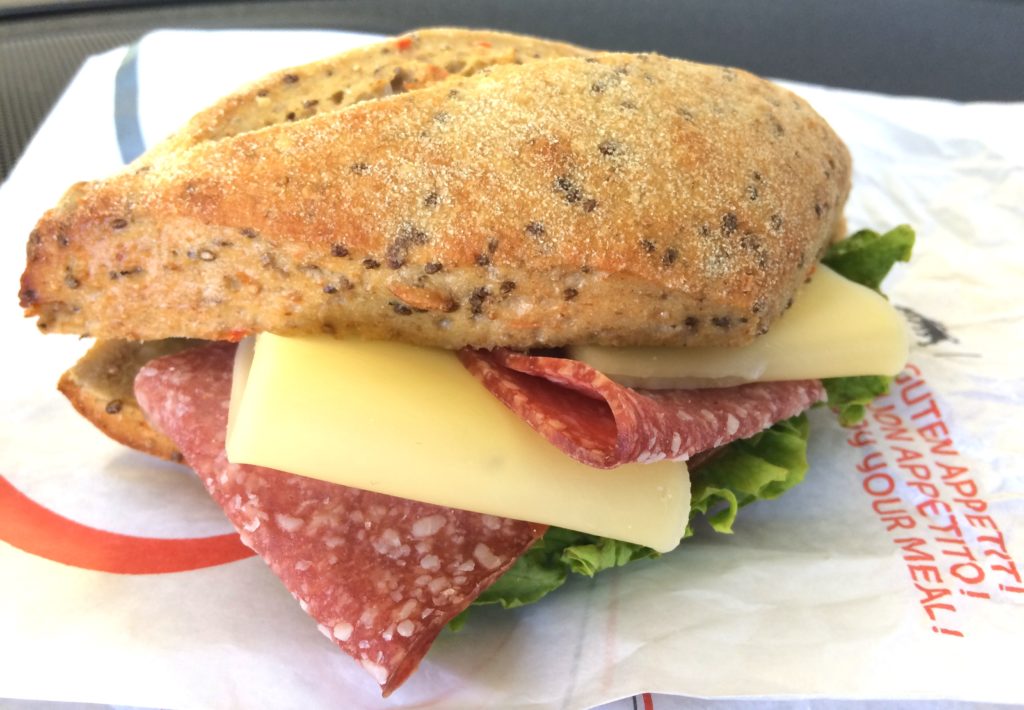
Schnitzel
Oh yeah, I tried some Schnitzel. And I loved it! Schnitzel is a thin pork or veal cutlet that’s breaded and fried. Schnitzels are often topped with a sauce and served with a starchy side. They were invented in Austria, but are very popular in Germany. But that’s not too surprising. That’s like saying that something was invented in Kentucky, but is very popular in Illinois. They share a border!
While in Plauen, I tried a couple different Schnitzels at Schnitzelparadies, yes that’s Schnitzel Paradise! This small local restaurant is just a bit up the hill from the shopping mall and the trolley station. They have a ton of Schnitzel to choose from! Pictured below is the schnitzel in tomato cream sauce with ham and cheese on top with a side of potato croquettes. It was delicious!

My second day in Plauen, I went back to Schnitzelparadies for more! Pictured below is the Karibik or Caribbean schnitzel. Um, wow! It was so good! I love seafood, so this was my favorite! It was topped with small shrimp in a crab herb sauce and fried “squid rings”, or calamari. On the side were parsley potatoes. It’s been over a year since I’ve been to Germany, and I still crave this dish.

Sauerbraten or Sour Roast
I wasn’t sure whether I was going to like Sauerbraten, but I had to try it while I was in Germany. Heinrich’s restaurant in the basement of the Altes Rathaus or City Hall seemed like a good place to try it. Sauerbraten, or Sour Roast, is a pot roast that’s been marinated for many days or even a week in a vinegar or wine solution.
The restaurant was very dark, so it was difficult to get a good photo, below. The roast was tender and quite tasty. If you’re not a fan of vinegar, then you probably won’t like Sauerbraten, though. The purple stuff is red cabbage, which I’m not a huge fan of. And the white balls are potato dumplings or Klöße. Potato dumplings are always a little too rubbery for my taste, though. Although I’m not a fan of these particular sides, I’m definitely a fan of Sauerbraten!

Solyanka Soup
I tried the Solyanka which is a traditional Russian or East German spicy and sour soup. I had this appetizer in Matsch Hotel and Beer Garden in Plauen which is just a block from the Altes Rathaus or City Hall. Their Solyanka is a tomato based soup containing fried sausage, bell peppers, pickles, onions, sour cream, parsley and dill. I’m not normally a huge soup fan, but this was amazing.

Dessert
The photo below was pretty common in shopping plazas and bakeries in Germany. So many little individual sized desserts to choose from!

This little treat is something that I had never seen before and I’ve never seen it since. But I’d like to see it again, because it was so good! I bought it in a little deli in the Alexa mall, in Berlin near the Alexanderplatz plaza. The store is called Butter Lindner and the product is Vanillequark, or Vanilla Quark. This stuff is magical. It’s smooth like yogurt and it’s sweet like ice cream.

Quark is actually a curdled milk product. It’s essentially a soft cheese. But this particular Butter Lindner product is like a cross between a cream cheese and a yogurt. It contains the soft quark cheese, sweet cream, sugar, cream cheese, whey, bourbon-vanilla, salt, citric acid, and finally a thickening agent. This stuff is so delicious and so fattening, it’s probably a good thing that I don’t have easy access to it here in America.
Beer Halls & Beer Gardens
Even though I’m not a beer drinker, I checked out a couple of Beer Halls and Beer Gardens in Berlin while I was there. The kitchen was closed at the Hofbräu Wirtshaus or Tavern in Berlin when I showed up, so I couldn’t try any of their food, but I checked out the place and saw this cool beer stein locker in the back of the restaurant. The regulars need only to carry a key, rather than carry their stein back and forth! Smart!

Obviously, I wish I could have enjoyed more German fare, but my time there was limited. So that’s all the food I was able to try and report on.
But wait, there’s even more Germany to explore!
Stay tuned because my final blog post from my April 2018 trip to Germany (yeah, I’m way behind on posting, I know) is going to talk about some misc things that didn’t fit into any of the previous categories! How’s that for a sales pitch?!?!?
Thanks for your interest!
Kurt

